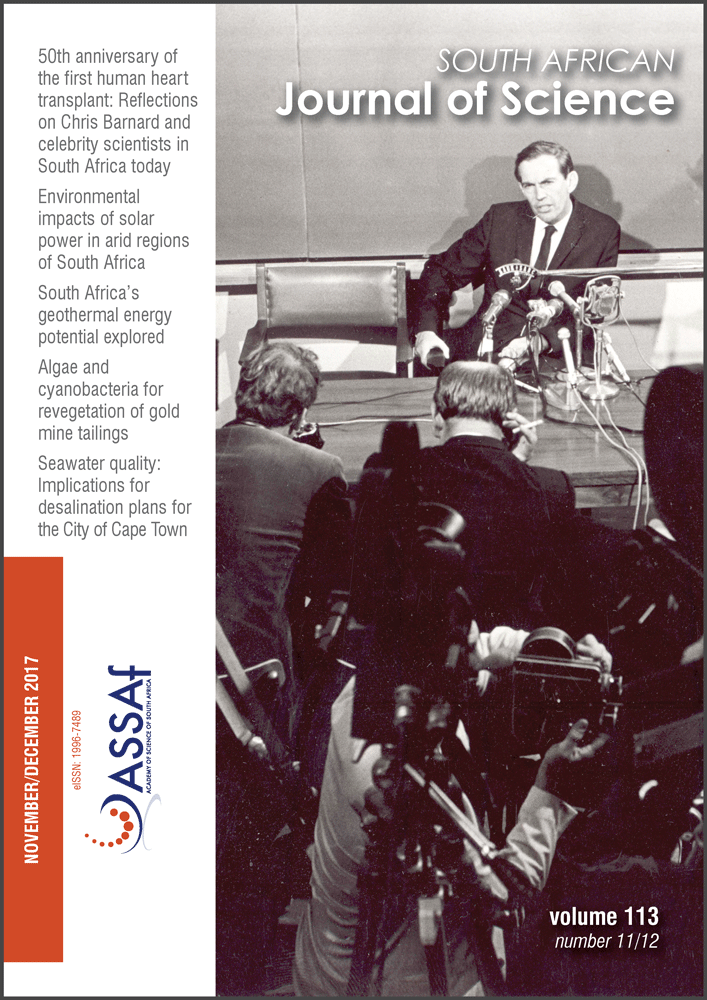South Africa's geothermal energy hotspots inferred from subsurface temperature and geology
DOI:
https://doi.org/10.17159/sajs.2017/20170092Keywords:
geothermometry, tectonics, renewable energy policyAbstract
South Africa intends to mitigate its carbon emissions by developing renewable energy from solar, wind and hydro, and investigating alternative energy sources such as natural gas and nuclear. Low-enthalpy geothermal energy is becoming increasingly popular around the world, largely as a result of technological advances that have enabled energy to be harnessed from relatively low temperature sources. However, geothermal energy does not form part of South Africa’s future renewable energy scenario. This omission may be related to insufficient regional analysis of potentially viable geothermal zones across the country. We considered existing subsurface temperature and heat flow measurements and performed solute-based hydrochemical geothermometry to determine potentially anomalous geothermal gradients that could signify underlying low-enthalpy geothermal energy resources. We correlated these findings against hydro/geological and tectonic controls to find prospective target regions for investigating geothermal energy development. Our results show a significant link between tectonic features, including those on-craton, and the development of geothermal potential regions. In addition, potential regions in South Africa share similarities with other locations that have successfully harnessed low-enthalpy geothermal energy. South Africa may therefore have a realistic chance of developing geothermal energy, but will still need additional research and development, including new temperature measurements, and structural, hydrogeological and economic investigations.
Significance:- The regional low-enthalpy geothermal energy potential of South Africa should be further researched for consideration of low-enthalpy geothermal energy as a renewable energy option.
Downloads
Published
Issue
Section
License

All articles are published under a Creative Commons Attribution 4.0 International Licence
Copyright is retained by the authors. Readers are welcome to reproduce, share and adapt the content without permission provided the source is attributed.
Disclaimer: The publisher and editors accept no responsibility for statements made by the authors
How to Cite
- Abstract 2023
- PDF 2111
- EPUB 271
- XML 345
- Supplementary Material 269












.png)